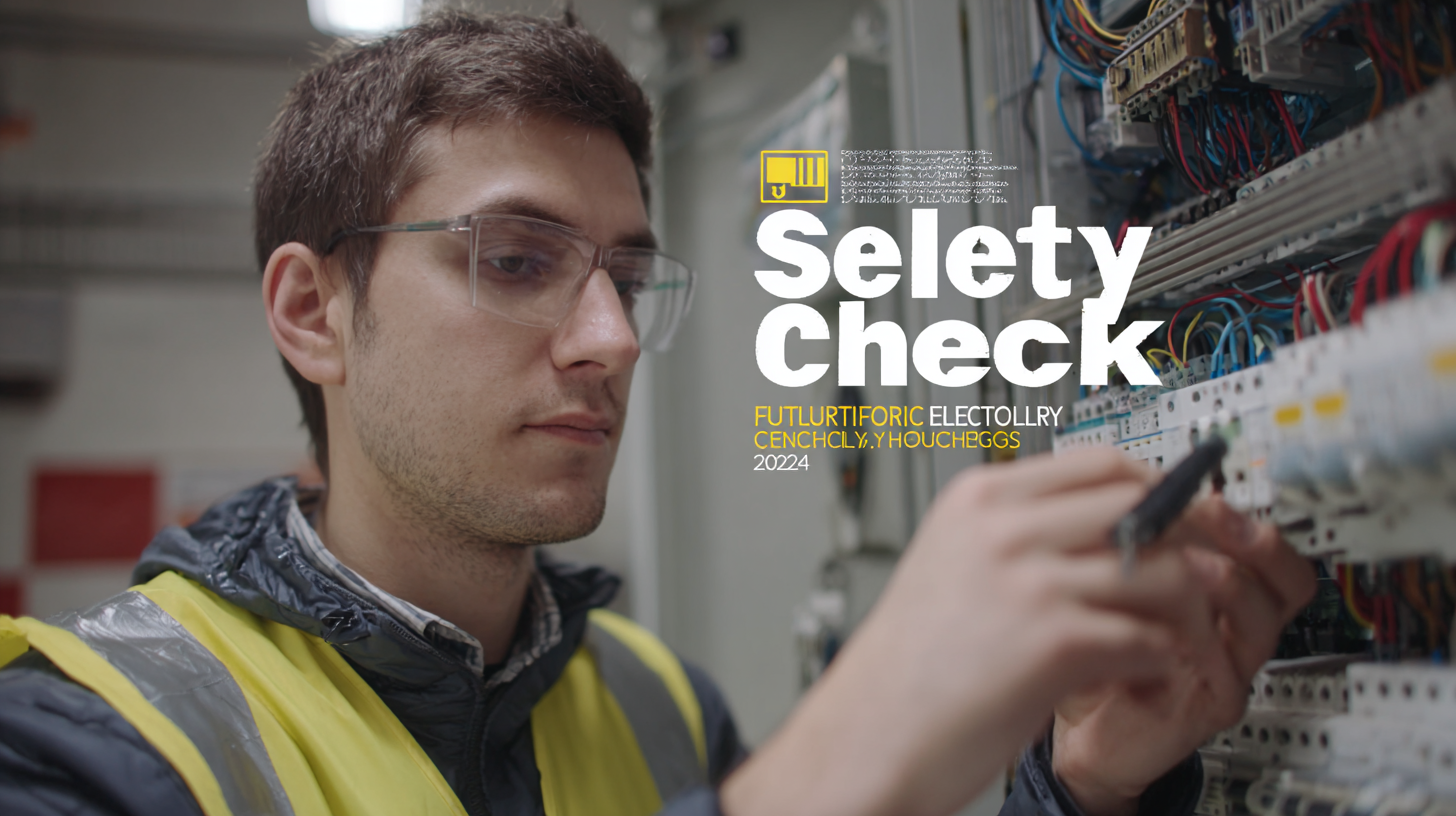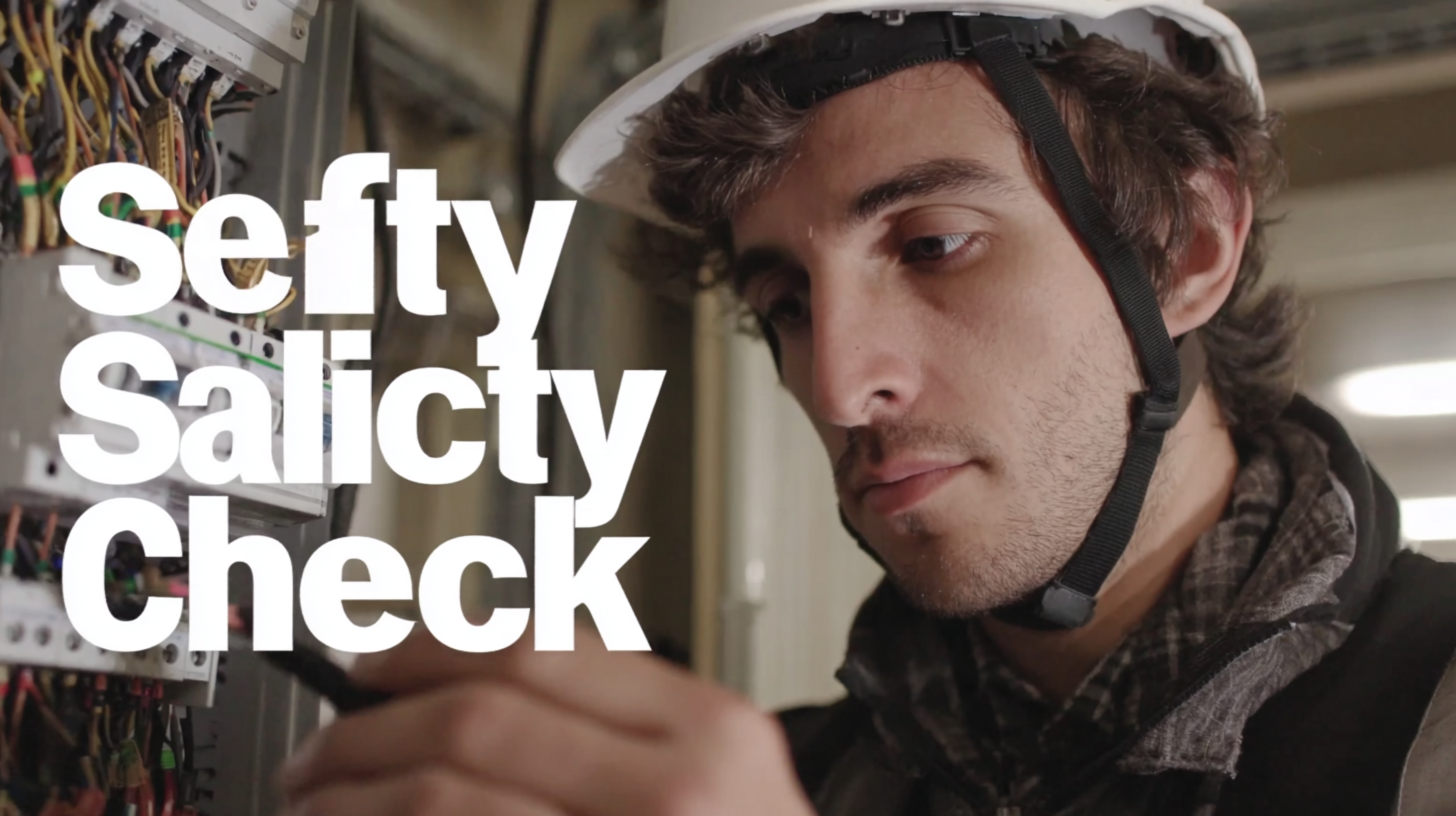- Home
- News
Futureproofing Electrical Safety Checks in 2025 with Emerging Technologies
As we look toward 2025, the importance of "Electrical Safety Check" in ensuring the reliability and safety of electrical systems cannot be overstated. With the rapid advancements in technology, the global market for electrical safety solutions is expected to reach $10.72 billion by 2025, growing at a CAGR of 8.2%. Emerging technologies such as the Internet of Things (IoT), artificial intelligence (AI), and machine learning are redefining how these checks are conducted, making them more efficient and predictive. According to a report by the National Fire Protection Association, electrical failures were the leading cause of home fires, accounting for approximately 30% of all residential fire incidents. To address these critical safety concerns, organizations must embrace innovative practices that not only comply with regulatory standards but also utilize real-time data analysis and automation to enhance the efficacy of electrical safety checks. This blog will explore the confluence of digital transformation and top technology trends shaping the future of electrical safety checks.

The Role of AI in Enhancing Electrical Safety Checks
As we advance into 2025, the integration of artificial intelligence (AI) poses a revolutionary shift in how we approach electrical safety checks. Traditional methods often rely on manual inspections that can overlook potential hazards due to human error or fatigue. By employing AI-driven algorithms, safety checks can become more thorough and consistent, as these systems are designed to analyze vast amounts of data swiftly and accurately. Through machine learning, AI can predict potential failures based on historical data, enhancing preventative measures and ensuring compliance with safety regulations.
Moreover, AI can facilitate real-time monitoring of electrical systems, providing instant alerts about anomalies that could lead to dangerous situations. For instance, smart sensors equipped with AI capabilities can detect fluctuations in current or voltage levels, enabling immediate action before issues escalate. This proactive approach not only reduces the risk of electrical accidents but also optimizes maintenance schedules, ultimately extending the lifespan of electrical equipment. As we embrace these innovations, the future of electrical safety checks looks promising, ensuring a safer environment for both industries and homeowners alike.
Integration of IoT Devices for Real-Time Monitoring and Reporting
As we move towards 2025, the integration of Internet of Things (IoT) devices in electrical safety checks is set to revolutionize the field. According to a report by MarketsandMarkets, the global IoT in electrical systems market is projected to grow from $80 billion in 2022 to over $150 billion by 2025. This growth highlights the increasing reliance on smart technology to enhance the safety and efficiency of electrical systems. Real-time monitoring enabled by IoT devices allows for immediate detection of anomalies or potential hazards, significantly reducing the risk of electrical failures that can lead to catastrophic accidents.
Furthermore, a study by Allied Market Research indicates that more than 50% of organizations plan to incorporate IoT technology into their safety protocols by 2025. This adoption will facilitate seamless reporting and analytics, providing enterprises with valuable insights into their electrical systems' performance. With IoT sensors capable of tracking variables like temperature, humidity, and voltage fluctuations, businesses can proactively address issues before they escalate. As industry leaders prioritize safety and efficiency, the integration of IoT in electrical safety checks will not only future-proof facilities but also contribute to a safer working environment for all.
Futureproofing Electrical Safety Checks in 2025 with Emerging Technologies - Integration of IoT Devices for Real-Time Monitoring and Reporting
| Device Type | Real-Time Monitoring Capability | Data Report Frequency | Key Benefits |
|---|---|---|---|
| Smart Circuit Breaker | Yes | Every 1 minute | Automatic shutoff during faults |
| IoT Power Meter | Yes | Every 5 minutes | Energy consumption insights |
| Smart Smoke Detector | Yes | Immediate alert | Enhanced safety warnings |
| Voltage and Current Sensor | Yes | Every 10 seconds | Preventative fault detection |
| IoT-enabled Electrical Panel | Yes | Real-time updates | Centralized monitoring |
Case Studies: How Emerging Technologies are Transforming Electrical Safety
As we approach 2025, the impact of emerging technologies on electrical safety is becoming increasingly significant. Innovations such as the Internet of Things (IoT), artificial intelligence (AI), and advanced predictive analytics are at the forefront, driving transformation in safety protocols. According to a recent industry report by MarketsandMarkets, the electrical safety equipment market is predicted to grow from $5.5 billion in 2020 to $9.1 billion by 2025, highlighting the urgency for companies to adopt new technologies to enhance safety measures. Case studies reveal that organizations implementing IoT sensors have reduced electrical hazards by up to 30% through real-time monitoring and alerts.

Tips for companies looking to future-proof their electrical safety checks include investing in smart monitoring systems that enable predictive maintenance. By utilizing AI algorithms, businesses can analyze historical data and identify patterns, predicting equipment failures before they occur. Additionally, training staff on the use of these technologies is crucial; a well-informed workforce is the first line of defense against electrical incidents.
The integration of augmented reality (AR) for maintenance training is also gaining traction. A study by the Global Augmented Reality Industry estimated that AR could reduce training costs by 40%, providing an interactive platform for employees to engage with safety protocols effectively. As these technologies continue to evolve, embracing them will not just ensure compliance, but also foster a culture of safety and efficiency.
The Impact of Predictive Maintenance on Electrical Safety Compliance
As we move towards 2025, the integration of emerging technologies is set to revolutionize electrical safety compliance, particularly through predictive maintenance. This innovative approach leverages data analytics and machine learning to foresee potential failures before they occur, allowing organizations to take preventive measures. By monitoring critical parameters in real-time, predictive maintenance not only enhances safety but also minimizes downtime, thus ensuring that electrical systems operate within regulatory standards consistently.
The impact of predictive maintenance extends beyond mere compliance; it fosters a culture of proactive safety management. By identifying trends and anomalies in electrical systems, companies can address underlying issues that could compromise safety. This approach not only safeguards personnel and assets but also boosts confidence among clients and stakeholders. As industries increasingly rely on data-driven solutions, the role of predictive maintenance in achieving and maintaining electrical safety standards will become indispensable, paving the way for a more resilient and compliant future.

Regulatory Changes and Their Influence on Future Electrical Safety Practices
As we look ahead to 2025, electrical safety practices will inevitably be shaped by shifting regulatory landscapes. The increasing demand for electricity, combined with stringent environmental regulations, necessitates that industries adapt their safety checks to meet both operational and compliance requirements. Regulatory bodies are likely to introduce more comprehensive guidelines aimed at improving safety standards and environmental responsibility, influencing how electrical systems are designed, maintained, and inspected.
Emerging technologies will play a critical role in this evolution. Innovations in smart grid technology, IoT devices, and AI-driven analytics can enhance monitoring and reporting, ensuring that organizations remain compliant with new regulations. By leveraging these advancements, companies can proactively address potential safety hazards and facilitate a rapid response to regulatory changes. As the regulatory environment tightens, prioritizing advanced technology adoption for electrical safety checks will not only help mitigate risks but also align with broader sustainability goals, ensuring a safer and more responsible energy future.
Futureproofing Electrical Safety Checks in 2025 with Emerging Technologies
This chart illustrates the projected adoption rates of various emerging technologies that influence electrical safety practices by the year 2025. The data focuses on key technologies such as IoT devices, AI-based monitoring, VR training, and advanced sensors.
